Research Results
1. Finding genes to help fruiting plants adapt to droughts
Water availability influences all aspects of plant growth and development; however, most studies of plant responses to drought have focused on vegetative organs, notably roots and leaves. Far less is known about the molecular bases of drought acclimation responses in fruits, which are complex organs with distinct tissue types. Researchers from the Boyce Thompson Institute and Cornell University, led by 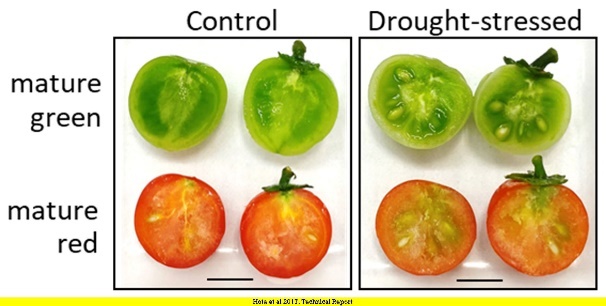 Carmen Catalá, provide a comprehensive picture of gene expression changes in response to water stress in fruit—the tomato, Solanum lycopersicum—by identifying genes that can help plant breeders develop fruits that can survive drought conditions. “We have identified several genes involved in the water stress response of tomato fruit,” said Catalá.
Carmen Catalá, provide a comprehensive picture of gene expression changes in response to water stress in fruit—the tomato, Solanum lycopersicum—by identifying genes that can help plant breeders develop fruits that can survive drought conditions. “We have identified several genes involved in the water stress response of tomato fruit,” said Catalá.
Researchers profiled the transcriptomes of a spectrum of fruit tissues from tomatoes, spanning early growth through ripening and collected from plants grown under varying intensities of water stress. They also compared transcriptional changes in fruit with those in leaves to highlight different and conserved transcriptome signatures in vegetative and reproductive organs. Changes in metabolic and hormonal pathways such as starch, carotenoid, jasmonic acid, and ethylene metabolism were associated with different fruit tissues and developmental stages. Gene co-expression network analysis provided additional information on the tissue-specific regulation of various responses to water stress. The data highlight the spatiotemporal specificity of tomato fruit responses to water stress and reveal known and unpublished molecular regulatory mechanisms involved in adaptation to water stress during both growth and reproductive phases. Researchers say that candidate genes can now be selected for many crops, which could help breeders develop fruits that can adapt to dry conditions.
For more, see https://www.sciencedaily.com/releases/2022/11/221130151453.htm
Access the abstract at https://academic.oup.com/plphys/article-abstract/190/4/2557/6711401?redirectedFrom=fulltext
2. Study shows ‘steep, cheap, and deep’ roots help corn plants deal with drought
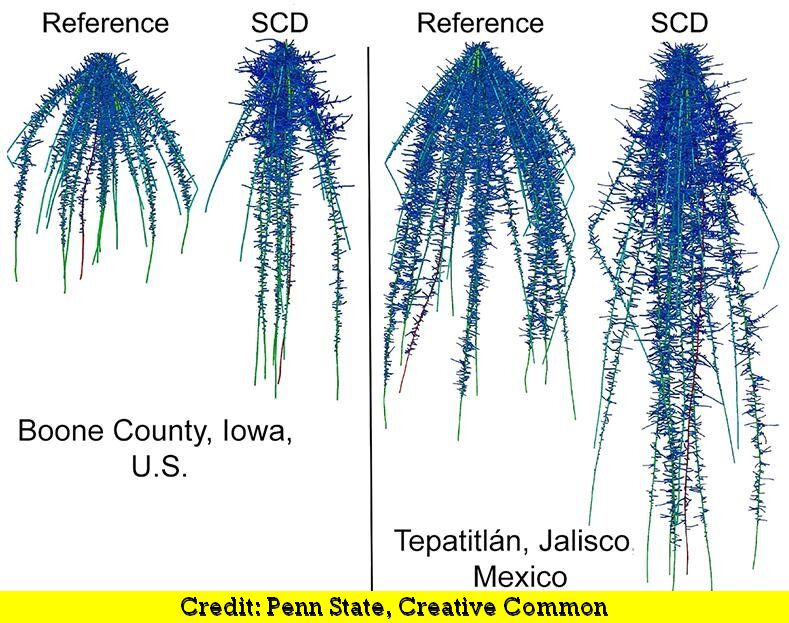 Drought is a primary constraint to crop yields. Climate change is expected to increase the frequency and severity of drought stress in the future. Hence, crops that can resist drought will be better able to sequester atmospheric carbon in the soil by selecting appropriate root phenotypes. An international team of researchers, led by Jonathan Lynch of Penn State University, USA, has found evidence in a new study of a “beneficial” root phenotype, which can be significant for identifying drought-resistant corn roots. They noted that the sensitive root strategy consists of plants with “steep, cheap, and deep roots.” “Cheap” refers to the metabolic cost of the corn plant, and it includes traits such as root reduction and rooting to reduce the number of indoor cells.
Drought is a primary constraint to crop yields. Climate change is expected to increase the frequency and severity of drought stress in the future. Hence, crops that can resist drought will be better able to sequester atmospheric carbon in the soil by selecting appropriate root phenotypes. An international team of researchers, led by Jonathan Lynch of Penn State University, USA, has found evidence in a new study of a “beneficial” root phenotype, which can be significant for identifying drought-resistant corn roots. They noted that the sensitive root strategy consists of plants with “steep, cheap, and deep roots.” “Cheap” refers to the metabolic cost of the corn plant, and it includes traits such as root reduction and rooting to reduce the number of indoor cells.
In the study, the researchers tested the ability of multiple variants of the steep, shallow, and deep ideotype to compare with the maize reference root phenotype under rainy and drought conditions in three separate maize-growing environments. “Steep, cheap, and deep” phenotypes produced about half of the shallow taproots; all root angles were on average 20 degrees steeper compared to control phenotypes; the frequency of lateral root branching was reduced by 50%; and airenchymal volume was increased from 20% to 40%. Because corn is a staple crop in the United States and an important food security crop in Africa and Latin America, the results of this study are important, Lynch suggests, adding that the findings point the way to developing more sustainable crops. The researchers conclude that crop growth and deep soil carbon deposition can be improved by breeding maize plants with fewer axial roots, reduced lateral root branching density, and more aerenchyma formation
For more, see https://phys.org/news/2022-12-steep-cheap-deep-roots-corn.html
Access the full paper at https://www.frontiersin.org/articles/10.3389/fpls.2022.1010165/full
3. Decoding the secret language of photosynthesis
 For over half a century, botanists have known that the command centre of a plant cell, the nucleus, sends instructions to other parts of the cell, compelling them to move forward with photosynthesis. So, the challenge to researchers at the Institute for Integrative Genome Biology, University of California, Riverside, USA, led by Professor Meng Chen, was to determine which ones among the hundreds of proteins encoded by the nucleus signal trigger photosynthesis. Previously, Chen’s team demonstrated that certain proteins in plant nuclei are activated by light, kicking off photosynthesis. Chen compares the whole photosynthesis process to a symphony. The team identified the proteins in the nucleus called photoreceptors that respond to light, activating the small organelles into chloroplasts which generate growth-fuelling sugars through photosynthesis. The significance of understanding how photosynthesis is controlled has applications beyond plant disease research.
For over half a century, botanists have known that the command centre of a plant cell, the nucleus, sends instructions to other parts of the cell, compelling them to move forward with photosynthesis. So, the challenge to researchers at the Institute for Integrative Genome Biology, University of California, Riverside, USA, led by Professor Meng Chen, was to determine which ones among the hundreds of proteins encoded by the nucleus signal trigger photosynthesis. Previously, Chen’s team demonstrated that certain proteins in plant nuclei are activated by light, kicking off photosynthesis. Chen compares the whole photosynthesis process to a symphony. The team identified the proteins in the nucleus called photoreceptors that respond to light, activating the small organelles into chloroplasts which generate growth-fuelling sugars through photosynthesis. The significance of understanding how photosynthesis is controlled has applications beyond plant disease research.
Light initiates chloroplast biogenesis in Arabidopsis by eliminating PHYTOCHROME-INTERACTING transcription FACTORs, which de-represses nuclear photosynthesis genes and synchronously generates a nucleus-to-plastid signal that activates the plastid-encoded bacterial-type RNA polymerase to transcribe plastid photosynthesis genes. Together, the results elucidate that light-dependent inhibition of PIFs activates plastid photosynthesis genes via sigma factors as anterograde signals, in parallel with the induction of nuclear photosynthesis genes. The main challenge so far has been the difficulty to distinguish regulators from the plethora of necessary components for plastid transcription and other essential chloroplast functions, such as photosynthesis.
Access the full paper at https://www.nature.com/articles/s41467-022-35080-0
4. Underground wildlife is slow to recover from soil damage, finds a study of croplands and plantations
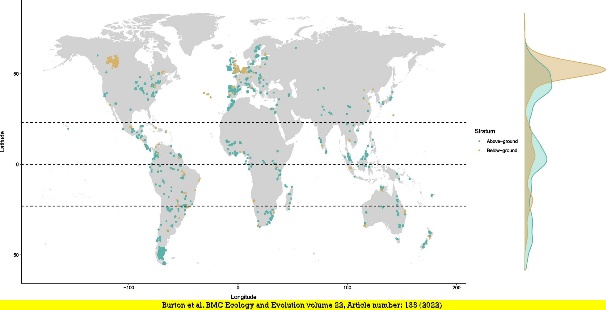 Organisms living in soil are particularly poorly represented, as is leaf cover (hereafter, soil biodiversity), in indicators and assessments of the global state of nature. This is despite their accounting for 23% of described living species, supporting ecosystem services such as nutrient cycling, soil formation, and water quality, with an estimated worth of 2.1 trillion USD annually worldwide, and the fact that they constitute the second largest carbon stock. At the same time, although land use is a major driver of changes in biodiversity worldwide, studies have overwhelmingly focused on above-ground taxa: the effects on soil biodiversity are less well known, despite the importance of soil organisms in ecosystem functioning. New studies by researchers led by Victoria Burton, Imperial College, London, UK, hope to start the process of change by revealing how our actions affect life in the soil.
Organisms living in soil are particularly poorly represented, as is leaf cover (hereafter, soil biodiversity), in indicators and assessments of the global state of nature. This is despite their accounting for 23% of described living species, supporting ecosystem services such as nutrient cycling, soil formation, and water quality, with an estimated worth of 2.1 trillion USD annually worldwide, and the fact that they constitute the second largest carbon stock. At the same time, although land use is a major driver of changes in biodiversity worldwide, studies have overwhelmingly focused on above-ground taxa: the effects on soil biodiversity are less well known, despite the importance of soil organisms in ecosystem functioning. New studies by researchers led by Victoria Burton, Imperial College, London, UK, hope to start the process of change by revealing how our actions affect life in the soil.
The studies found that land use affects total soil and soil composition differently. The number of soil organisms in cultivation and planting environments was lower than in primary vegetation and pastures. Soil properties influenced the abundance of soil biota in different land uses, suggesting that they shape both abundance and its response to land use. The results of the study caution against models or indicators derived solely from soil data being applied to soil composition, and they emphasize the inclusion of soil properties in biodiversity models. Of the soil characteristics, soil acidity had the greatest effect on plantings.
The abundance of soil organisms in these environments was lower than in their terrestrial counterparts, which may be related to soil acidification during the decomposition of pine needles. This means that current indicators, models, and frameworks for monitoring and combating biodiversity loss may be insufficient to safeguard the soil biodiversity needed to underpin ecosystem functioning. New indicators will have to be developed.
Access the full paper at https://bmcecolevol.biomedcentral.com/articles/10.1186/s12862-022-02089-4
5. Harmful fungal toxins in wheat are a growing threat, says a study
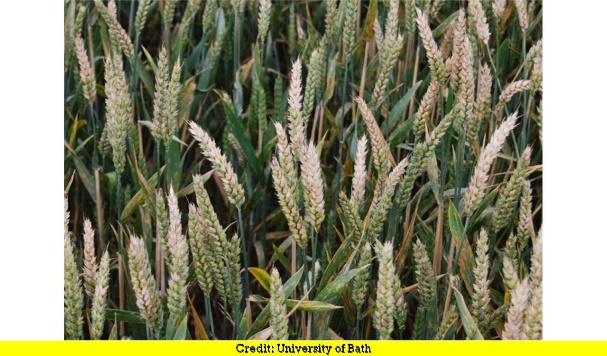 Mycotoxins harm human and livestock health, while thus damaging economies. These are fungal secondary metabolites that are toxic to humans and livestock. They occur when fungal pathogens infect crops and contaminate their products. Mycotoxins contaminate 60–80% of crops, with 20% of global crops exceeding European Union (EU) legal food safety limits. According to research led by Neil Brown and colleagues at the University of Bath, Exeter, UK, the fungus that causes these toxins affects almost half of wheat crops. The researchers examined the largest set of data available from governments and agricultural companies, both of which track fusarium mycotoxins in wheat grains entering our food and nutrition chains.
Mycotoxins harm human and livestock health, while thus damaging economies. These are fungal secondary metabolites that are toxic to humans and livestock. They occur when fungal pathogens infect crops and contaminate their products. Mycotoxins contaminate 60–80% of crops, with 20% of global crops exceeding European Union (EU) legal food safety limits. According to research led by Neil Brown and colleagues at the University of Bath, Exeter, UK, the fungus that causes these toxins affects almost half of wheat crops. The researchers examined the largest set of data available from governments and agricultural companies, both of which track fusarium mycotoxins in wheat grains entering our food and nutrition chains.
Half of the wheat consumed in Europe contains the fusarium mycotoxin DON, while 70% of wheat in Great Britain is contaminated. The researchers alarmingly found that 25% of the food wheat containing the mycotoxin DON also contained other fusarium toxins. Professor Sarah Gurr, a co-author, and head of the Department of Food Safety at the University of Exeter said: “We need to be vigilant in testing for mycotoxins in grain. We each eat around 66 kg of wheat flour per year, for example, in pasta and bread, and wheat needs to be protected from fusarium infection to mitigate this risk.” Brown believes the development of better ways to protect crops against fungal pathogens is the only way to successfully mitigate the negative economic and health impacts of mycotoxins. “As mycotoxin outbreaks become more severe in the future with climate change, this issue is only going to become more important,” he said. Studies across wheat-growing areas are needed to assess the threat of mycotoxins across the globe.
For more, see https://phys.org/news/2022-12-fungal-toxins-wheat-threat.html?utm_source=nwletter&utm_medium=email&utm_campaign=daily-nwletter
Access the full paper at https://www.nature.com/articles/s43016-022-00655-z
6. Researchers solve pre-harvest sprouting in rice and wheat
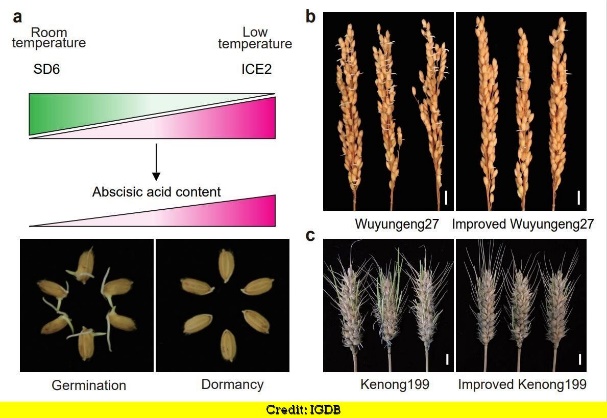 Seed dormancy is an important survival tool for plants because it allows them to weather conditions not conducive to survival. At the same time, excessive dormancy may lessen cultivation time. In response, farmers often plant low dormancy cultivars of rice and wheat to achieve a higher, more uniform emergence rate after sowing. Unfortunately, this practice has led to an unwanted worldwide production problem called pre-harvest sprouting (PHS). In rice, PHS damages about 6% of the acreage of conventional rice and as much as 20% of hybrid rice acreage, owing to long-term rainy weather during the harvest season in southern China. A team, led by Caixia Gao and Chengcai Chu from the Institute of Genetics and Developmental Biology of the Chinese Academy of Sciences, recently revealed that the Seed Dormancy 6 (SD6) inducer of C-repeat binding factors expression 2 (ICE2) molecular module controls rice seed dormancy and has great potential for improving PHS tolerance in rice and wheat.
Seed dormancy is an important survival tool for plants because it allows them to weather conditions not conducive to survival. At the same time, excessive dormancy may lessen cultivation time. In response, farmers often plant low dormancy cultivars of rice and wheat to achieve a higher, more uniform emergence rate after sowing. Unfortunately, this practice has led to an unwanted worldwide production problem called pre-harvest sprouting (PHS). In rice, PHS damages about 6% of the acreage of conventional rice and as much as 20% of hybrid rice acreage, owing to long-term rainy weather during the harvest season in southern China. A team, led by Caixia Gao and Chengcai Chu from the Institute of Genetics and Developmental Biology of the Chinese Academy of Sciences, recently revealed that the Seed Dormancy 6 (SD6) inducer of C-repeat binding factors expression 2 (ICE2) molecular module controls rice seed dormancy and has great potential for improving PHS tolerance in rice and wheat.
In this study, the researchers used a set of chromosome single-segment substitution lines derived from a cross between the weak-dormancy japonica rice cultivar, Nipponbare, and the strong-dormancy ‘aus-type’ rice cultivar, Kasalath, to identify a gene, named Seed Dormancy 6, that contributes to rice seed dormancy. Further, the researchers found that the SD6/ICE2 molecular module controls rice seed dormancy in a temperature-dependent manner: SD6 is up-regulated to trigger seed germination when seeds are at room temperature. By editing SD6 in three rice cultivars, the researchers found that gene editing of SD6 could be a rapid and useful strategy for improving PHS tolerance in rice. Interestingly, editing the TaSD6 gene in the wheat variety Kenong199 also greatly improved PHS resistance in wheat, indicating that the SD6 gene is functionally conserved in controlling seed dormancy in both rice and wheat.
For more, see https://phys.org/news/2022-12-pre-harvest-rice-wheat.html?utm_source=nwletter&utm_medium=email&utm_campaign=daily-nwletter
Access the abstract at https://www.nature.com/articles/s41588-022-01240-7
7. Researchers discover a master regulator of plant immunity
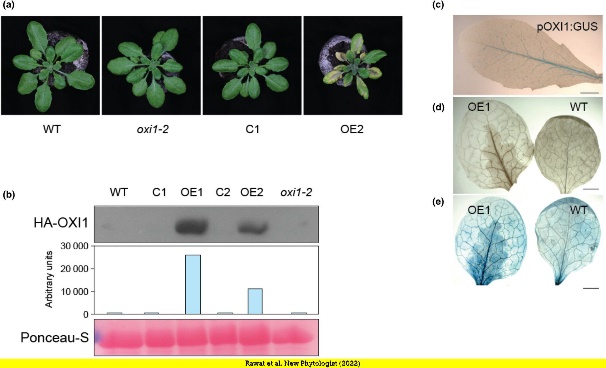 Plants have evolved different strategies to cope with different stresses. Their ability to adapt to changing environments is highly dependent on recognition and signalling processes, which are based on receptors and signalling networks. It has been demonstrated that plant plasma membrane-localized pattern recognition receptors (PRRs) recognize microbe-derived molecular patterns, resulting in pattern-triggered immunity (PTI). Pattern-triggered immunity is the first layer of plant immunity and is essential for plants to resist various pathogens. The demonstration that a regulatory protein linked to stress responses in plants also serves as a master switch for anti-pathogen immunity could help breeders develop more pest-resistant and climate-resilient crops. A study by a research team led by Heribert Hirt at the King Abdullah University of Science and Technology (KAUST), Thuwal, Saudi Arabia, and Jürgen Zeier at Heinrich Heine University, Düsseldorf, Germany, suggests that agricultural scientists seeking to implement sustainable plant protection strategies could simply focus on this important protein—OXIDATIVE SIGNAL-INDUCIBLE1 (OXI1), instead of focusing on individual immune signals involved in plant defence. The researchers say that the identification of OXI1 as one of the molecular switches of immunity offers several important advantages in molecular breeding, although it was not entirely clear how the protein exerted its biological effects. Researchers created mutant forms of Arabidopsis plants that either lacked OXI1 function or had increased expression of the regulatory protein.
Plants have evolved different strategies to cope with different stresses. Their ability to adapt to changing environments is highly dependent on recognition and signalling processes, which are based on receptors and signalling networks. It has been demonstrated that plant plasma membrane-localized pattern recognition receptors (PRRs) recognize microbe-derived molecular patterns, resulting in pattern-triggered immunity (PTI). Pattern-triggered immunity is the first layer of plant immunity and is essential for plants to resist various pathogens. The demonstration that a regulatory protein linked to stress responses in plants also serves as a master switch for anti-pathogen immunity could help breeders develop more pest-resistant and climate-resilient crops. A study by a research team led by Heribert Hirt at the King Abdullah University of Science and Technology (KAUST), Thuwal, Saudi Arabia, and Jürgen Zeier at Heinrich Heine University, Düsseldorf, Germany, suggests that agricultural scientists seeking to implement sustainable plant protection strategies could simply focus on this important protein—OXIDATIVE SIGNAL-INDUCIBLE1 (OXI1), instead of focusing on individual immune signals involved in plant defence. The researchers say that the identification of OXI1 as one of the molecular switches of immunity offers several important advantages in molecular breeding, although it was not entirely clear how the protein exerted its biological effects. Researchers created mutant forms of Arabidopsis plants that either lacked OXI1 function or had increased expression of the regulatory protein.
OXI1 contributes to enhanced immunity by induced salicylic acid (SA) biosynthesis via three transcription factors (proteins). Collectively, the researchers showed how OXI1 triggers a handful of genes that promote the synthesis of SA, NHP, and camalexin. The build-up of these three immune-promoting molecules then confers greater protection against plant pathogens. However, as extra immunity brought on by OXI1 results in the stunting of plants due to cell death, crop developers will have to find the right balance of OXI1 activity for their agricultural applications. As a protein kinase, OXI1 should be amenable to manipulation, Hirt points out.
For more, see https://phys.org/news/2022-12-master-immunity.html
Access the full paper at https://nph.onlinelibrary.wiley.com/doi/10.1111/nph.18592
Potential Crops/Technologies/Concepts
1. Scientists develop a method to allow trees to flower in mere months
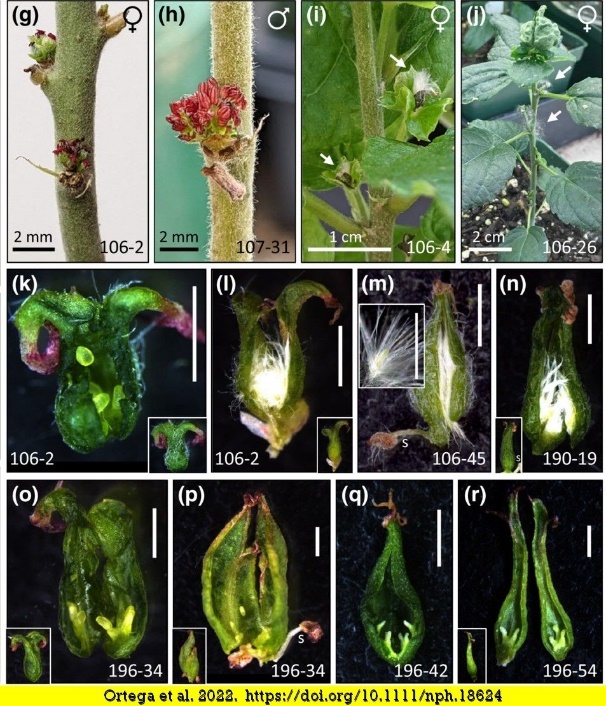 Normal breeding experiments can take years to come to fruition. When scientists want to improve a variety of vegetables, it can take a year or less to see changes—just the length of a reproductive cycle. But breeding improvements into trees can take years—sometimes decades. Using the CRISPR gene-enhancing device, a research team led by Chung-Jui Tsai of the University of Georgia, Athens, USA, has advanced a way that shortens the time it takes a poplar tree to flower from 7-10 years to just a few months. The study also sheds light on how the trees develop reproductive organs, and thus opens doors to new research. The method could be a significant change in the world of tree research, considerably shortening the time needed by projects to produce desired results.
Normal breeding experiments can take years to come to fruition. When scientists want to improve a variety of vegetables, it can take a year or less to see changes—just the length of a reproductive cycle. But breeding improvements into trees can take years—sometimes decades. Using the CRISPR gene-enhancing device, a research team led by Chung-Jui Tsai of the University of Georgia, Athens, USA, has advanced a way that shortens the time it takes a poplar tree to flower from 7-10 years to just a few months. The study also sheds light on how the trees develop reproductive organs, and thus opens doors to new research. The method could be a significant change in the world of tree research, considerably shortening the time needed by projects to produce desired results.
The authors have developed an induction-free, in vitro flowering system, by targeting a negative regulator of floral initiation, CENTRORADIALIS (CEN, also called TERMINAL FLOWER), for knockout (KO). CEN antagonizes FT and LFY to regulate meristem determinacy and flowering. Poplar trees were used in the experiment, said Tsai, because of their potential as bioenergy woody crops, and because their DNA has been fully mapped by the Department of Energy. With their accelerated flowering, Maria Ortega, senior research associate in Tsai’s Forest Functional Genomics Lab, observed unusual development of male flowers or complete male and female flowers in the female poplar trees that the team studied. The study revealed another surprising twist as researchers watched the flowering trees grow: an additional gene edit showed promise in reducing the cottony seed attachments used by the plants to spread their seeds each spring.
Access the full paper at https://nph.onlinelibrary.wiley.com/doi/10.1111/nph.18624
2. Female sterility technique proves efficient in hybrid rice breeding

Male sterility has been extensively studied, as it enables hybrid crop breeding to increase yields. But thermo-sensitive female sterility, which is an ideal property that may enable full mechanization in hybrid rice breeding, has rarely been investigated owing to the absence of suitable germplasm. Research by a team of researchers at Hong Kong Baptist University, involving the use of a pioneering female sterility technique, has led to a breakthrough in the production of hybrid rice seeds. Compared to the commonly used “Three-line” male sterility technique in hybrid rice seeds production, the novel approach enhances the efficiency of hybrid rice production by eliminating rice seeds that have been produced from the self-pollination of the “Restorer line.”
Over the past few decades, following pioneering work by Professor Yuan Longping, the “Father of Hybrid Rice,” scientists have developed hybrid rice breeding techniques by exploiting sterile male genes, and these techniques can produce hybrid seeds with the normally self-pollinating rice plants in large quantities. China and other countries worldwide have extensively used the male-sterility technique to produce hybrid rice seeds, which has led to a substantial increase in rice yields. The present research findings provide a suitable trait for fully mechanized hybrid rice breeding, and a genetic tool that promises commercial applications. To fully exploit the potential of the tool and to maximize rice yields, there is a need for large-scale field trials to improve the receptibility between female and male-sterile lines.
Access the abstract at https://www.nature.com/articles/s41422-022-00711-0
3. An environmentally friendly RNA-based spray to help combat rust disease in plants
Rust fungi (Pucciniales) are a variable group of plant pathogens. They pose a constant threat to the diversity of local flora and cause annual crop losses. In agriculture, rusts are mostly controlled by fungicides and breeding to achieve resistance, but new control strategies are needed for non-agricultural crops and 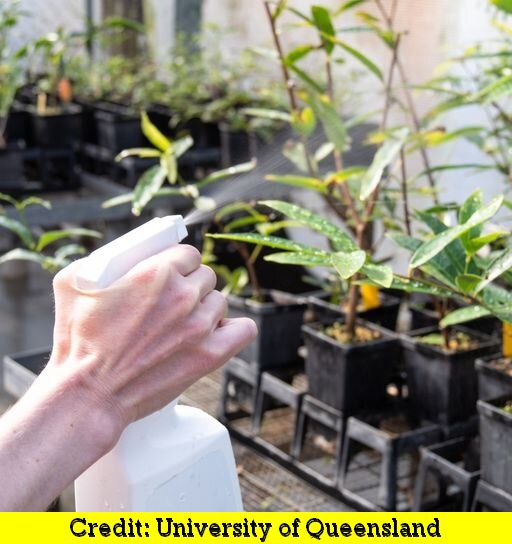 sensitive ecosystems. RNA interference (RNAi) induced by exogenous double-stranded RNA (dsRNA) is a promising sustainable approach to control plant pathogenic fungi, including rust fungi. Researchers from the University of Queensland, led by Neena Mitter and Anne Sawyer, have developed an environmentally friendly RNA-based spray to help combat myrtle rust, which has decimated many Australian plants. Developed in collaboration with Ministry of Agriculture and Fisheries forest pathologists, the spray induces RNA interference—a natural way of stopping protein translation—meaning it could stop the spread of myrtle rust, which has become a major problem, infecting more than 300 native plant species, through bushes, home gardens, and nurseries. These findings indicate that dsRNA targeting essential genes has the potential for broad-use management of rust fungi across natural and agricultural systems.
sensitive ecosystems. RNA interference (RNAi) induced by exogenous double-stranded RNA (dsRNA) is a promising sustainable approach to control plant pathogenic fungi, including rust fungi. Researchers from the University of Queensland, led by Neena Mitter and Anne Sawyer, have developed an environmentally friendly RNA-based spray to help combat myrtle rust, which has decimated many Australian plants. Developed in collaboration with Ministry of Agriculture and Fisheries forest pathologists, the spray induces RNA interference—a natural way of stopping protein translation—meaning it could stop the spread of myrtle rust, which has become a major problem, infecting more than 300 native plant species, through bushes, home gardens, and nurseries. These findings indicate that dsRNA targeting essential genes has the potential for broad-use management of rust fungi across natural and agricultural systems.
Access the full paper at https://bsppjournals.onlinelibrary.wiley.com/doi/10.1111/mpp.13286
4. Technology to aid detection and identification of plant diseases
Improved technology is coming to the aid of both agricultural research and production. Two recent examples, with considerable promise/potential, are briefly described here.
 When the plants are healthy, they emit a red light that is almost impossible to see with the naked eye, but with a new device developed by William Pietro and Ozzy Mermut at the University of York, it is now possible to measure the light either in the laboratory or in the field, although it may sound like science fiction to say that healthy plants glow as the result of absorbed light from the sun, which is related to the photosynthetic activity and health of the plant. The device that has been developed can help measure the health and resilience of plants, especially those stressed by CO2 emissions, greenhouse gases, and extreme weather events, and thus assess the impact of industrialization. Results from this proof-of-concept prototype demonstrate that a new, simple, and effective photon-counting instrument has been achieved. The instrument can be deployed in the field to rapidly, and with minimum invasiveness, assess plant physiological growth and health, based on fluorescence measurements directly from a plant leaf.
When the plants are healthy, they emit a red light that is almost impossible to see with the naked eye, but with a new device developed by William Pietro and Ozzy Mermut at the University of York, it is now possible to measure the light either in the laboratory or in the field, although it may sound like science fiction to say that healthy plants glow as the result of absorbed light from the sun, which is related to the photosynthetic activity and health of the plant. The device that has been developed can help measure the health and resilience of plants, especially those stressed by CO2 emissions, greenhouse gases, and extreme weather events, and thus assess the impact of industrialization. Results from this proof-of-concept prototype demonstrate that a new, simple, and effective photon-counting instrument has been achieved. The instrument can be deployed in the field to rapidly, and with minimum invasiveness, assess plant physiological growth and health, based on fluorescence measurements directly from a plant leaf.
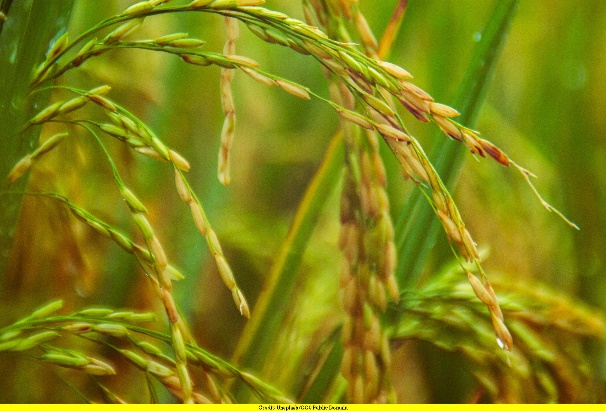 New work by Manoj Agrawal and Shweta Agrawal of Sage University in Indore, India, investigated whether an application based on a convolution neural network (CNN) algorithm could be used to determine quickly and effectively what is afflicting a crop, especially in the early stages, when signs and symptoms may well be ambiguous. They suggest that an automated method for rice disease identification is much needed. They have now trained various machine learning tools with more than 4,000 images of healthy and diseased rice and then tested them against disease data from different sources. Experimental results show that the ResNet50 architecture achieved the highest accuracy of 97.5%, as compared to other CNN architectures in the existing literature. The system can determine from a photograph of a sample of the crop whether or not it is diseased and, if the crop is diseased, it can then identify which of the following common diseases affect the rice plant: Leaf Blast, Brown Spot, Sheath Blight, Leaf Scald, Bacterial Leaf Blight, Rice Blast, Neck Blast, False Smut, Tungro, Stem Borer, Hispa, or Sheath Rot.
New work by Manoj Agrawal and Shweta Agrawal of Sage University in Indore, India, investigated whether an application based on a convolution neural network (CNN) algorithm could be used to determine quickly and effectively what is afflicting a crop, especially in the early stages, when signs and symptoms may well be ambiguous. They suggest that an automated method for rice disease identification is much needed. They have now trained various machine learning tools with more than 4,000 images of healthy and diseased rice and then tested them against disease data from different sources. Experimental results show that the ResNet50 architecture achieved the highest accuracy of 97.5%, as compared to other CNN architectures in the existing literature. The system can determine from a photograph of a sample of the crop whether or not it is diseased and, if the crop is diseased, it can then identify which of the following common diseases affect the rice plant: Leaf Blast, Brown Spot, Sheath Blight, Leaf Scald, Bacterial Leaf Blight, Rice Blast, Neck Blast, False Smut, Tungro, Stem Borer, Hispa, or Sheath Rot.
For more, see https://phys.org/news/2022-12-portable-device-emitted-health.html?utm_source=nwletter&utm_medium=email&utm_campaign=daily-nwletter and https://phys.org/news/2022-12-app-rice-disease-early-stages.html?utm_source=nwletter&utm_medium=email&utm_campaign=daily-nwletter
Access the full paper at https://www.mdpi.com/2079-6374/12/10/817 and
Access the abstract at https://www.inderscience.com/offer.php?id=127396
5. Alternative Agrobacterium method bypasses tissue culture to multiply sweet potato cultivars
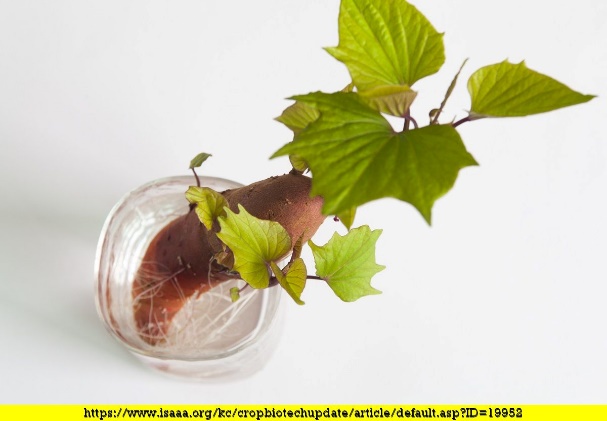 Chinese scientists, led by Hong Zhai and Shaopei Gao from the Key Laboratory of Sweet Potato Biology and Biotechnology, China Agricultural University, Beijing, were able to multiply sweet potatoes by utilizing both Agrobacterium rhizogenes and the crop’s natural transgenic trait. Their method skips the need for tissue culture to obtain genetically modified sweet potato plants. Since previous studies found that sweet potato is a naturally transgenic plant, the scientists theorized that this bacterium-plant relationship is more symbiotic than parasitic and that A. rhizogenes can be used to induce hairy roots upon wounding and infecting plant leaves or stems. The hairy roots may then contain the T-DNA of the bacterium’s binary vector if co-transferred, and these roots may serve as adventitious roots with the potential to develop into storage roots with heritable genetic modifications.
Chinese scientists, led by Hong Zhai and Shaopei Gao from the Key Laboratory of Sweet Potato Biology and Biotechnology, China Agricultural University, Beijing, were able to multiply sweet potatoes by utilizing both Agrobacterium rhizogenes and the crop’s natural transgenic trait. Their method skips the need for tissue culture to obtain genetically modified sweet potato plants. Since previous studies found that sweet potato is a naturally transgenic plant, the scientists theorized that this bacterium-plant relationship is more symbiotic than parasitic and that A. rhizogenes can be used to induce hairy roots upon wounding and infecting plant leaves or stems. The hairy roots may then contain the T-DNA of the bacterium’s binary vector if co-transferred, and these roots may serve as adventitious roots with the potential to develop into storage roots with heritable genetic modifications.
They inoculated its vine cuttings with A. rhizogenes K599-IbRPS5a:GUS and planted them under natural field conditions, where they also induced hairy roots and plant growth. Initial PCR testing found that 100% of the infected vine cuttings could produce transgenic positive storage roots. Whole plants were regenerated and underwent qRT-PCR analysis, which showed that 90-100% of the infected plants formed positive storage roots. The researchers concluded that the hairy root lines established from single root meristems are cellular clones, and every transgenic storage root represents an independent transformation event. The study determined that the A. rhizogenes method is faster, simpler, and more efficient than having to go through tissue culture.
For more, see https://www.isaaa.org/kc/cropbiotechupdate/article/default.asp?ID=19952
Access the full paper at https://onlinelibrary.wiley.com/doi/epdf/10.1111/pbi.13986 (accepted)
6. Corn-colonizing fungus may help the crop repel disease, grow larger
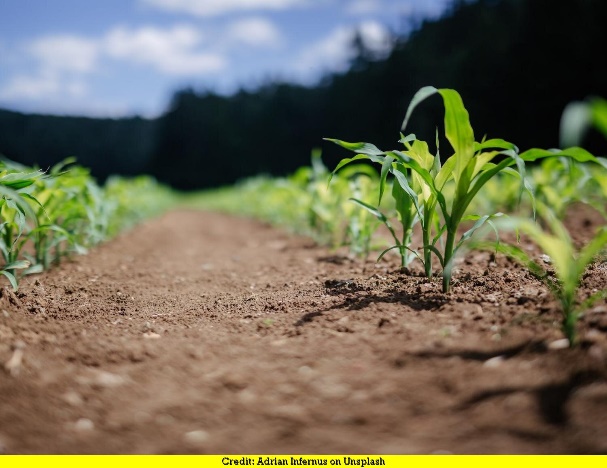 Plants face various biotic challenges, such as diseases and insect pests, which can significantly decrease crop yield and quality. To overcome such challenges, growers typically apply synthetic pesticides, which are associated with risks to environmental sustainability and human health. To defend against biotic and abiotic stresses, researchers have been trying to develop alternative strategies, such as biological control and mutualistic associations with microbes. A fungus (Metarhizium spp., for example, M. robertsii) that can colonize or grow on corn plants may not only leave the plants unharmed, but it may also help the plants fight off harmful insects and other fungi, according to researchers led by Mary Barbercheck, at the Pennsylvania State University, University Park, USA. They found that when the fungus colonized corn, the plants were less vulnerable to another fungus, C. heterostrophus, which causes southern blight.
Plants face various biotic challenges, such as diseases and insect pests, which can significantly decrease crop yield and quality. To overcome such challenges, growers typically apply synthetic pesticides, which are associated with risks to environmental sustainability and human health. To defend against biotic and abiotic stresses, researchers have been trying to develop alternative strategies, such as biological control and mutualistic associations with microbes. A fungus (Metarhizium spp., for example, M. robertsii) that can colonize or grow on corn plants may not only leave the plants unharmed, but it may also help the plants fight off harmful insects and other fungi, according to researchers led by Mary Barbercheck, at the Pennsylvania State University, University Park, USA. They found that when the fungus colonized corn, the plants were less vulnerable to another fungus, C. heterostrophus, which causes southern blight.
It was known that the fungus could infect and kill insects, but only ten years ago they realized that the fungus is also an endophyte or an organism like some bacteria and fungi that live in plants without harming them and may also benefit them. When the seedlings were large enough to sprout three or four leaves, the researchers applied C. heterostrotrophusia, the fungus that causes southern dieback, to both treated and untreated plants. Researchers found that 74% of plants whose seeds were treated with M. robertsii spores were successfully colonized by the fungus. Researchers think that these findings could be used to develop treatments for plants or to treat seeds before they are planted, which could protect plants from pests and diseases, and thus help promote crop growth.
Access the full paper at https://journals.plos.org/plosone/article?id=10.1371/journal.pone.0272944
7. A theory of change for sustainable agriculture
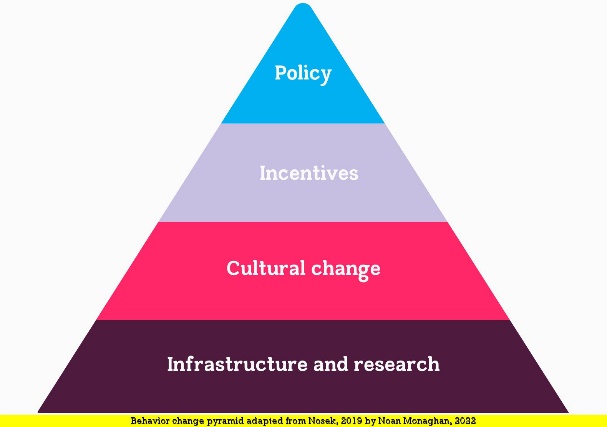 In the last two decades, the attention of national and international groups has been drawn toward unsustainable agricultural production systems. The need for sustainable agricultural practices is today well recognized, and several different strategies have been developed with the understanding that one shoe does not fit all. As of this writing, says the author Nolan Monaghan, University of Missouri Center for Agroforestry, USA, there are two main strategies for adopting sustainable agricultural practices in North America. The first is quite simple: it is simply a combination of education and outreach, where it is hoped that landowners will see the obvious benefits of sustainable practices and voluntarily adopt them. The second approach focuses on increasing financial incentives for landowners and farmers to change agricultural practices towards more sustainable management. Both approaches have had some success, because thousands of acres have been improved and environmental problems have been mitigated by their employment. However, these strategies have been woefully underwhelming in their ability to, at scale, change land use in an environmentally sustainable way.
In the last two decades, the attention of national and international groups has been drawn toward unsustainable agricultural production systems. The need for sustainable agricultural practices is today well recognized, and several different strategies have been developed with the understanding that one shoe does not fit all. As of this writing, says the author Nolan Monaghan, University of Missouri Center for Agroforestry, USA, there are two main strategies for adopting sustainable agricultural practices in North America. The first is quite simple: it is simply a combination of education and outreach, where it is hoped that landowners will see the obvious benefits of sustainable practices and voluntarily adopt them. The second approach focuses on increasing financial incentives for landowners and farmers to change agricultural practices towards more sustainable management. Both approaches have had some success, because thousands of acres have been improved and environmental problems have been mitigated by their employment. However, these strategies have been woefully underwhelming in their ability to, at scale, change land use in an environmentally sustainable way.
Monaghan says that a more substantive theory of change is needed to drive the adoption of sustainable agricultural practices. For this, he adapts the approach espoused by the Center for Open Science, which designs software to increase the transparency of scientific research (see https://www.cos.io/blog/strategy-for-culture-change). Their model utilizes a pyramid of strategies that build off each other to drive behavioural change. Monaghan has adapted this model to apply to agriculture.
What is the place of incentives to make agriculture more sustainable? Incentives to encourage early adoption of such practices not only encourage experimentation and the growth of infrastructure and products to serve these early adopters, but they also finance the diffusion of sustainable practices into communities. This change in the concept of adoption of sustainable agricultural practices has vastly improved potential over the present two strategies, as it would be more targeted and purposeful. It is imperative, however, to start a conversation about the demand for sustainable practices on American farms. (Note: A similar examination of strategies adopted in various countries and regions, and the development of targeted practices, would help in furthering sustainable agriculture across the globe, avoiding the pitfalls of hit-and-miss methods.)
For more, see https://www.resilience.org/stories/2022-12-15/a-theory-of-change-for-sustainable-agriculture/
News:
1. Can we hack DNA to grow more food for a hotter, hungrier planet?
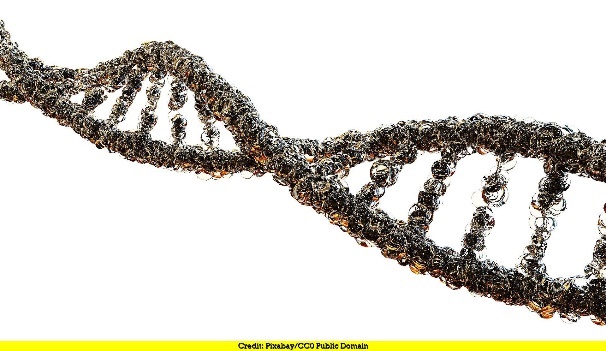 There is little doubt that to feed a hotter and drier planet, efforts must focus on increasing food production based on plants that can tolerate higher temperatures and survive well on little water. Synthetic engineering offers the opportunity to build new functional circuits into existing developmental programmes. With this aim, a team at Stanford University, USA, led by Professor José Dinneny, along with bioengineering Professor Jennifer Brophy and colleagues, is working on genetically reprogrammed plants grown in a laboratory to grow long or short, branched, or thin roots, which change the ability to collect nutrients or water. Scientists have modified root structures by adding DNA that changes the genetic circuitry of the plant in response to environmental influences. Researchers have designed a collection of synthetic regulatory elements, which they can use to control gene expression. Synthetic biology offers a way forward to avoid cutting down more forests to create agricultural lands.
There is little doubt that to feed a hotter and drier planet, efforts must focus on increasing food production based on plants that can tolerate higher temperatures and survive well on little water. Synthetic engineering offers the opportunity to build new functional circuits into existing developmental programmes. With this aim, a team at Stanford University, USA, led by Professor José Dinneny, along with bioengineering Professor Jennifer Brophy and colleagues, is working on genetically reprogrammed plants grown in a laboratory to grow long or short, branched, or thin roots, which change the ability to collect nutrients or water. Scientists have modified root structures by adding DNA that changes the genetic circuitry of the plant in response to environmental influences. Researchers have designed a collection of synthetic regulatory elements, which they can use to control gene expression. Synthetic biology offers a way forward to avoid cutting down more forests to create agricultural lands.
Critics, such as at the Center for Food Safety (CFS), say there are better ways to deal with the problem, such as improving the soil or using traditional techniques to grow crops that can withstand the effects of a changing climate. For years, scientists have tried to improve plants using traditional genetic engineering, in which pieces of bacterial DNA are inserted into a plant’s genome to change a specific trait, such as resistance to pests and herbicides. Success is still elusive. “If you step back from the genes and look more holistically at the environment in which the plant grows, sometimes much simpler and more direct solutions can be found,” says Freese at CFS. However, life is an incredible biological machine, said Cumbers, founder and CEO of SynBioBeta, who envisions editing the DNA code of plants to grow buildings according to our design requirements, creating entire cities from living organic material.
Access the abstract at https://www.science.org/doi/10.1126/science.abo4326 also see https://www.science.org/doi/10.1126/science.aba01961.
2. How far can tech solutions help us to deal with climate change risks
 The world is under growing pressure to find sustainable options to cut emissions or lessen the impacts of climate change. Various technological solutions are being advanced to deal with the situation.
The world is under growing pressure to find sustainable options to cut emissions or lessen the impacts of climate change. Various technological solutions are being advanced to deal with the situation.
The biotech sector is now using climate change as an urgent argument for more government funding, public support, and fewer regulatory hurdles for their industry. However, newer studies indicate that caution is required over the possible solutions in the future, as the risk is already here and we cannot wait. Climate change is an “attractive” problem because there are so many technological ways to solve it. What needs to be better understood is that climate change is a symptom of environmental degradation and the multifarious complexities of poverty. Tech solutions only address the symptoms; advanced technologies are known to increase the gap between haves and have-nots, and they thus exacerbate the situation further. So, Jack Heineman and Tessa Hiscoxs at the University of Canterbury, Christchurch, New Zealand, suggest that there is a need for rethinking the drivers of biotechnologies for dealing with climate change.
Dealing with technological solutions to mitigate the impact of climate change, Jacob Moscona and Karthik Sastry at the Harvard University and Abdul Latif at Jameel Poverty Action Lab, United States, suggest that tech innovations alone cannot save us from the worst of climate change effects. Their claim is based on the evidence from US Agriculture. According to their study, innovation has reacted strongly to rising temperatures. It has shifted focus toward crops and areas of the country most negatively affected by climate change and toward more adaptive forms of technology, like heat-resistant seeds. This has all helped farmers adapt. However, the notion that new technology is going to fully mitigate the economic consequences of climate change, even in a rich country like the U.S., seems inconsistent with existing data. According to their estimates, new technology has mitigated about 20% of the potential economic damage from climate change since 1960. We must not use the immediacy of climate change to put off breaking habits that will lead to future environmental and social catastrophes.
For more, see https://theconversation.com/chasing-future-biotech-solutions-to-climate-change-risks-delaying-action-in-the-present-it-may-even-make-things-worse-194147 and https://news.harvard.edu/gazette/story/2022/11/can-tech-save-us-from-worst-of-climate-change-effects-doesnt-look-good/
Access the abstract at https://www.sciencedirect.com/science/article/abs/pii/S1877343522000744
Access the abstract at https://academic.oup.com/qje/advance-article- and
3. Pollination loss removes healthy foods from global diets, increases chronic diseases and causes excess deaths

(GIF image: Creative Commons Attribution-Share Alike 4.0)
According to a study, led by Matthew Smith of the Harvard T.H. Chan School of Public Health, Boston, Massachusetts, USA, insufficient pollination caused a 3-5 % reduction in fruit, vegetable, and nut production and an estimated 27,000 additional deaths each year, from reduced healthy food consumption and related diseases, such as heart disease, stroke, diabetes, and some cancers. They used a global risk-averse model to estimate the health effects of
changes in pollination on nutritional risks and mortality by country. The results showed that lost food production was concentrated in lower-income countries, but the health burden was greater in middle- and high-income countries with higher rates of noncommunicable diseases. The pattern of geographic distribution is unusual, as the health effects of global environmental change are concentrated among the poorest populations in regions such as South Asia and sub-Saharan Africa. According to environmental researchers, the lack of direct links with human health in the biodiversity debate has been a worrying feature. “The study shows that the loss of pollinators is already affecting health in a way similar to other global health risks factors, such as prostate cancer or substance use disorders,” said Samuel Myers, director of environmental health at Planet Health.
Access the full paper at https://ehp.niehs.nih.gov/doi/10.1289/EHP10947
4. Using the nexus approach to identify systematic solutions for sustainable development
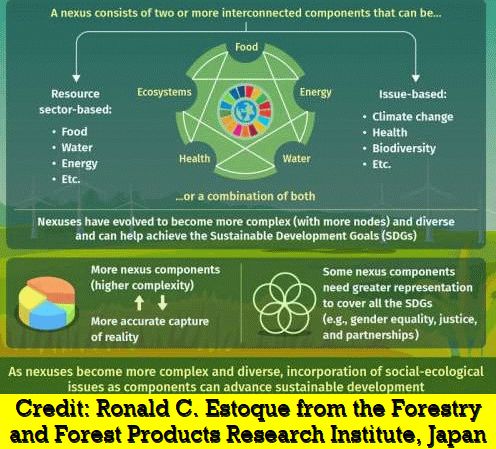 The United Nations Sustainable Development Goals (SDGs), adopted in 2015, tackle a wide array of contemporary issues, such as food, water, and energy insecurity, biodiversity loss, climate change, and rapid and spontaneous urbanization. To achieve these goals, one needs a strategy aimed at overall progress, rather than improvement in isolated areas. The nexus approach is a method for dealing with sustainable development challenges in an integrated manner. It aims to tackle those challenges in an integrated manner, considering multiple variables at once. A recent review by Ronald Estoque, from the Forestry and Forest Products Research Institute, Japan, explains how the trends of development in the nexus approach can help achieve SDGs.
The United Nations Sustainable Development Goals (SDGs), adopted in 2015, tackle a wide array of contemporary issues, such as food, water, and energy insecurity, biodiversity loss, climate change, and rapid and spontaneous urbanization. To achieve these goals, one needs a strategy aimed at overall progress, rather than improvement in isolated areas. The nexus approach is a method for dealing with sustainable development challenges in an integrated manner. It aims to tackle those challenges in an integrated manner, considering multiple variables at once. A recent review by Ronald Estoque, from the Forestry and Forest Products Research Institute, Japan, explains how the trends of development in the nexus approach can help achieve SDGs.
Although the nexus approach was introduced in the early 1980s, tracing its history revealed that it has become more common in the context of sustainable development only in recent years. This approach is a tool for systems integration, stakeholder engagement, and exploring pathways. More efforts are needed to harness the potential of this approach for global sustainability. Although the nexus approach is promising, an important question remains about which components should be included as priorities in sustainable development policymaking.
Access the abstract at https://www.sciencedirect.com/science/article/abs/pii/S0048969722057114?via%3Dihub
5. Plant breeding must adapt to climate change, finds Study
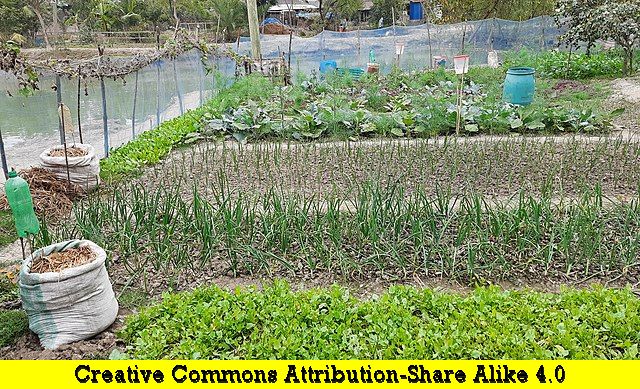 Breeding is an important part of the global agri-food system, enabling researchers to adapt crops to changing environmental factors, support better crop management, and inform policy interventions in global food production. The challenge of crop production grows every year, with farmers experiencing more effects from climate change as the population and demand for food grow. Research by the International Maize and Wheat Breeding Center, led by Matthew Reynolds, has shown that climate change affects the goals, efficiency, and genetic benefits of current breeding, limiting the breeding of the next generation. The study concluded that climate change requires a faster reproductive cycle, and this must lead to changes in reproductive goals, prioritizing climate resilience as the risk grows of multiple crop failures brought about by climate change. “Breeding must become more deterministic about adaptation if we are to avoid rising food prices, hunger, and social unrest,” said Reynolds. The challenges of developing climate-resilient crops arise from the paradox of urgent breeding needs caused by climate change and the limited understanding of how different genotypes are affected by climate change. Integrating multiple disciplines and techniques, including genotyping, phenotyping, and environmental typing can accelerate the development and faster delivery of climate-adapted crops.
Breeding is an important part of the global agri-food system, enabling researchers to adapt crops to changing environmental factors, support better crop management, and inform policy interventions in global food production. The challenge of crop production grows every year, with farmers experiencing more effects from climate change as the population and demand for food grow. Research by the International Maize and Wheat Breeding Center, led by Matthew Reynolds, has shown that climate change affects the goals, efficiency, and genetic benefits of current breeding, limiting the breeding of the next generation. The study concluded that climate change requires a faster reproductive cycle, and this must lead to changes in reproductive goals, prioritizing climate resilience as the risk grows of multiple crop failures brought about by climate change. “Breeding must become more deterministic about adaptation if we are to avoid rising food prices, hunger, and social unrest,” said Reynolds. The challenges of developing climate-resilient crops arise from the paradox of urgent breeding needs caused by climate change and the limited understanding of how different genotypes are affected by climate change. Integrating multiple disciplines and techniques, including genotyping, phenotyping, and environmental typing can accelerate the development and faster delivery of climate-adapted crops.
For more, see https://www.cimmyt.org/news/plant-breeding-must-adapt-to-climate-change-finds-study/
Access extended abstract https://www.sciencedirect.com/science/article/abs/pii/S1369526622001376?via%3Dihub
6. 100-year data show modern wheat varieties are win-win for both productivity and biodiversity
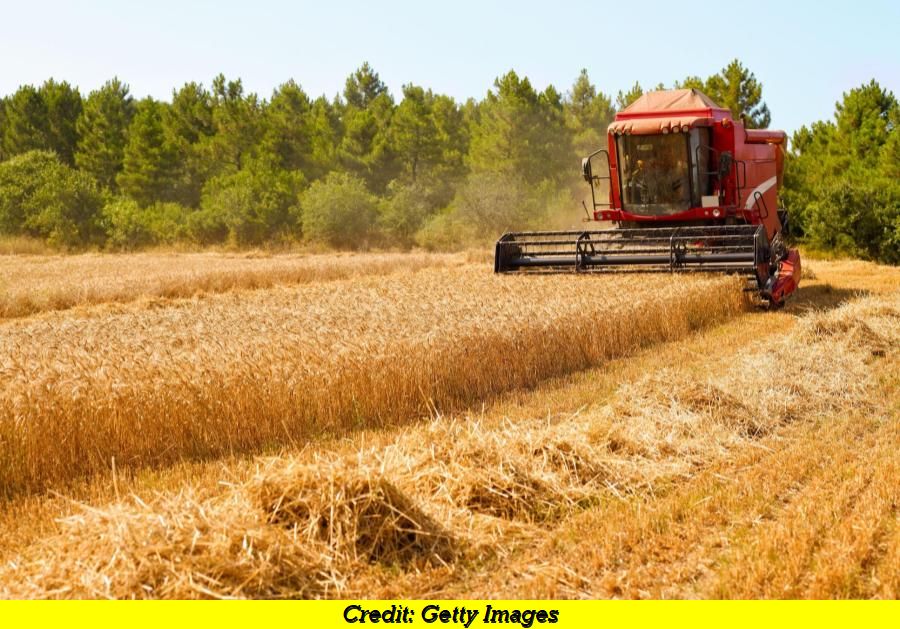 Agriculture can be both a cause of the global biodiversity crisis and a means of addressing it. Though there are calls for going back to old cultivars to increase diversity on farms, new research from the University of Minnesota suggests the contrary is true at least in some cases, as, in the diversity of the US wheat crop. Thus, the push by farmers to return to landraces may not be a sustainable solution. Innovations in scientifically bred varieties allow feeding more people with less land and other inputs, while retaining much of crop diversity. In addition to the long-term role that improving crop productivity plays in alleviating poverty and improving food security, sustainable agricultural systems are increasingly needed to meet the growing challenges of climate change, land and water scarcity, and new pests and diseases. Increasing the climate and pest resilience of the world’s food supply in ways that also meet global food security goals will require a doubling of crop improvement research that increases, not decreases, crop biodiversity (Note: Evidence also exists, however, for loss of crop diversity due to the use of modern varieties. Thus, the conclusion arrived at for wheat and USA may not hold good in other cases. In addition, genetic diversity may increase, but species diversity may be going down with fewer crops being grown)
Agriculture can be both a cause of the global biodiversity crisis and a means of addressing it. Though there are calls for going back to old cultivars to increase diversity on farms, new research from the University of Minnesota suggests the contrary is true at least in some cases, as, in the diversity of the US wheat crop. Thus, the push by farmers to return to landraces may not be a sustainable solution. Innovations in scientifically bred varieties allow feeding more people with less land and other inputs, while retaining much of crop diversity. In addition to the long-term role that improving crop productivity plays in alleviating poverty and improving food security, sustainable agricultural systems are increasingly needed to meet the growing challenges of climate change, land and water scarcity, and new pests and diseases. Increasing the climate and pest resilience of the world’s food supply in ways that also meet global food security goals will require a doubling of crop improvement research that increases, not decreases, crop biodiversity (Note: Evidence also exists, however, for loss of crop diversity due to the use of modern varieties. Thus, the conclusion arrived at for wheat and USA may not hold good in other cases. In addition, genetic diversity may increase, but species diversity may be going down with fewer crops being grown)
For more, see https://twin-cities.umn.edu/news-events/100-years-data-shows-modern-wheat-varieties-are-productivity-and-biodiversity-win-win
Access the abstract at https://www.pnas.org/doi/10.1073/pnas.2210773119
7. Crop waste cattle feed solution ‘averts toxic fires’
 The main reasons for burning crop residues in fields are the lack of labour, the high costs of removing residues from the field, and the increasing use of harvesters for harvesting. Rice straw is unsuitable for animal feed because of its high silica content, and wheat straw is not chopped because of its hard stem and difficulty chewing. The use of nutritional additives, such as urea and fodder straw sprayed with urea, improves its nutritional value and assimilation. Satya Prakash Kumar and colleagues from the Indian Council of Agricultural Research have developed a mechanized baler, equipped with a system to inject urea during baling, to improve the nutritional value of crop residues. The developed system was evaluated on cut wheat residue and an analysis of nutritional value was performed. The crude protein content of untreated wheat stalks increased from 3.68% to 10.10% when treated with urea. The metabolizable energy was also found to improve by 3%, compared to untreated straw. Thus, urea-treated bales have a potential use in dairy farming and for reduced straw burning and consequential air pollution.
The main reasons for burning crop residues in fields are the lack of labour, the high costs of removing residues from the field, and the increasing use of harvesters for harvesting. Rice straw is unsuitable for animal feed because of its high silica content, and wheat straw is not chopped because of its hard stem and difficulty chewing. The use of nutritional additives, such as urea and fodder straw sprayed with urea, improves its nutritional value and assimilation. Satya Prakash Kumar and colleagues from the Indian Council of Agricultural Research have developed a mechanized baler, equipped with a system to inject urea during baling, to improve the nutritional value of crop residues. The developed system was evaluated on cut wheat residue and an analysis of nutritional value was performed. The crude protein content of untreated wheat stalks increased from 3.68% to 10.10% when treated with urea. The metabolizable energy was also found to improve by 3%, compared to untreated straw. Thus, urea-treated bales have a potential use in dairy farming and for reduced straw burning and consequential air pollution.
For more, see https://www.currentscience.ac.in/Volumes/123/11/1381.pdf
8. How intensive agriculture turned a wild plant into a pervasive weed
New research is showing how the rise of modern agriculture has turned the common water hemp, a common North American native plant, into a problematic agricultural weed. An international team, led by Julia Kreiner at the University of British Columbia, Canada, compared 187 waterhemp samples from modern farms and neighbouring wetlands, with more than 100 historical samples dating as far back as 1820, which had been stored in museums across North America. It appears that genetic variants that help plants do well in modern agricultural environments have increased to high frequencies remarkably quickly since agricultural intensification in  the 1960s. “In the absence of herbicide use, resistance can be costly to a plant, so changes in farms affect a plant’s fitness in the wild,” said Kreiner. “Extending this research to scales and species expands our understanding of how agriculture and climate change drive rapid plant evolution.” There can be similar rapid evolutions taking place in other parts of the world where intensive agriculture is practiced.
the 1960s. “In the absence of herbicide use, resistance can be costly to a plant, so changes in farms affect a plant’s fitness in the wild,” said Kreiner. “Extending this research to scales and species expands our understanding of how agriculture and climate change drive rapid plant evolution.” There can be similar rapid evolutions taking place in other parts of the world where intensive agriculture is practiced.
Access the abstract at https://www.science.org/doi/10.1126/science.abo7293
9. Biodiversity in Africa and Latin America at risk from oil palm expansion, a new report warns
 A study of zero-deforestation commitments (ZDCs) has shown that inadvertently many vital habitats in Latin America and Africa are vulnerable to suffering agricultural expansion. The yield of palm oil is estimated to be six times that of many other vegetable oils, such as rapeseed. It is also considered to support the livelihood of millions of people in tropical countries. However, a study by a research team, led by Susannah Fleiss University of York, York, UK, highlights how current commitments to sustainability may have the unintended consequence of expanding oil palm cultivation, which threatens areas of important biodiversity. Although the team found that oil palm yields are currently lower in grassland and dry forest areas than in tropical rainforests, these areas would still be attractive to expanding oil palm cultivation, threatening the biodiversity present in them. The authors conclude that Pal Myõl’s sustainability guidelines were developed in the context of Southeast Asian rainforests. Now that the expansion is moving into different ecological contexts, the scope of sustainability commitments must similarly be expanded according to current threatened biodiversity and carbon stocks. To prevent the unintended consequences of ZDCs and minimize the environmental impacts of oil palm expansion, policies and governance for sustainable development and conservation must expand their focus from rainforests to all tropical biomes.
A study of zero-deforestation commitments (ZDCs) has shown that inadvertently many vital habitats in Latin America and Africa are vulnerable to suffering agricultural expansion. The yield of palm oil is estimated to be six times that of many other vegetable oils, such as rapeseed. It is also considered to support the livelihood of millions of people in tropical countries. However, a study by a research team, led by Susannah Fleiss University of York, York, UK, highlights how current commitments to sustainability may have the unintended consequence of expanding oil palm cultivation, which threatens areas of important biodiversity. Although the team found that oil palm yields are currently lower in grassland and dry forest areas than in tropical rainforests, these areas would still be attractive to expanding oil palm cultivation, threatening the biodiversity present in them. The authors conclude that Pal Myõl’s sustainability guidelines were developed in the context of Southeast Asian rainforests. Now that the expansion is moving into different ecological contexts, the scope of sustainability commitments must similarly be expanded according to current threatened biodiversity and carbon stocks. To prevent the unintended consequences of ZDCs and minimize the environmental impacts of oil palm expansion, policies and governance for sustainable development and conservation must expand their focus from rainforests to all tropical biomes.
Access the abstract at https://www.nature.com/articles/s41559-022-01941-6
10. A journey across generations: Inheritance of the plant microbiome via seed
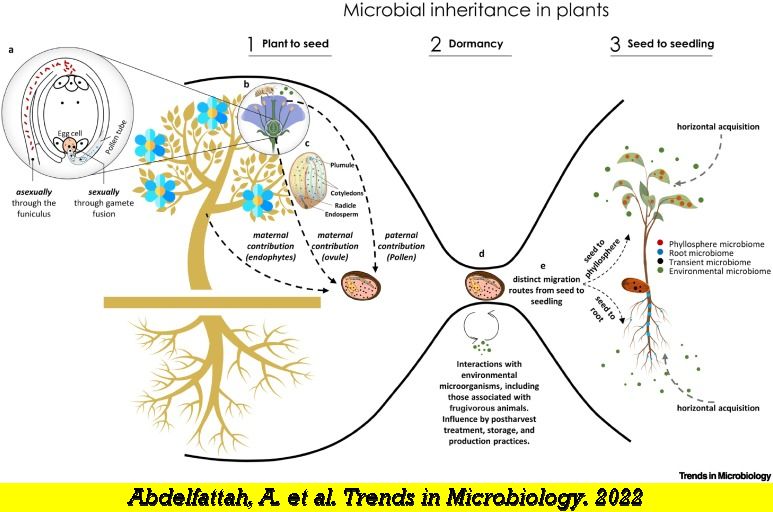 The question is to what defines living organisms more strongly—genes or the environment? It is only recently that researchers have been able to prove experimentally that plants can inherit microorganisms from one plant generation to the next, via the seed. Despite evidence that the microbiome extends the genetic and phenotypic characteristics of the host, knowledge of the intergenerational transmission and maintenance of the microbiome is still fragmented. The seeds of seed-bearing plants have a distinct microbiome, and they play a unique role in connecting one generation to another. A study led by Gabriele Berg at the Leibniz Institute for Agricultural Engineering and Bioeconomy (ATB), Max-Eyth Allee Potsdam, Germany, suggests that microbial inheritance is a process that involves both vertical transfer and subsequent transfer of seed microorganisms to a new plant; this becomes important for understanding host evolutionary potential and host-microbial coevolution. Researchers propose to divide the inheritance process into three stages: (i) plant to seed, (ii) seed to dormancy, and (iii) seed to plant. The researchers discuss the factors that influence the formation of the microbiome, and they outline future research directions and emphasize the effect of microbial inheritance from the viewpoint of basic science and society. Although research on the seed microbiome is still in its infancy, it can advance our understanding of the natural world, with implications in fundamental and applied sciences and for society.
The question is to what defines living organisms more strongly—genes or the environment? It is only recently that researchers have been able to prove experimentally that plants can inherit microorganisms from one plant generation to the next, via the seed. Despite evidence that the microbiome extends the genetic and phenotypic characteristics of the host, knowledge of the intergenerational transmission and maintenance of the microbiome is still fragmented. The seeds of seed-bearing plants have a distinct microbiome, and they play a unique role in connecting one generation to another. A study led by Gabriele Berg at the Leibniz Institute for Agricultural Engineering and Bioeconomy (ATB), Max-Eyth Allee Potsdam, Germany, suggests that microbial inheritance is a process that involves both vertical transfer and subsequent transfer of seed microorganisms to a new plant; this becomes important for understanding host evolutionary potential and host-microbial coevolution. Researchers propose to divide the inheritance process into three stages: (i) plant to seed, (ii) seed to dormancy, and (iii) seed to plant. The researchers discuss the factors that influence the formation of the microbiome, and they outline future research directions and emphasize the effect of microbial inheritance from the viewpoint of basic science and society. Although research on the seed microbiome is still in its infancy, it can advance our understanding of the natural world, with implications in fundamental and applied sciences and for society.
Access the full paper at https://www.cell.com/action/showPdf?pii=S0966-842X%2822%2900292-X
11. Study finds most Asian countries are far behind biodiversity targets for protected areas
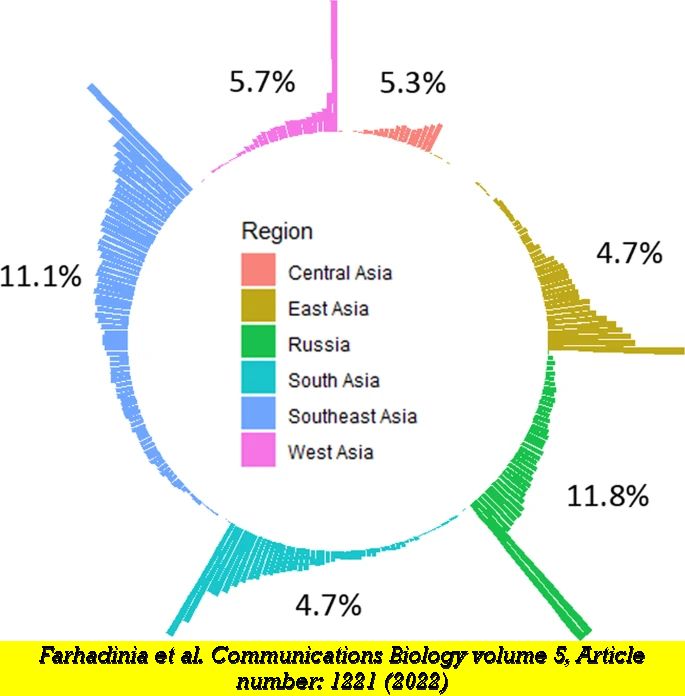 Protected areas are one of the most effective ways to protect biodiversity, but new research published today has shown that most Asian countries have failed to meet the global minimum target of protecting at least 17% of land by 2020. Only 40% of Asian countries have achieved this target. In Asian countries overall, the amount of protected land also grew more slowly per year, on average only 0.4% per year. A multinational team of researchers, led by Mohammed Farhadinia from the University of Oxford, UK, calculated that all Asian countries will not reach the 2030 target unless their rate of establishment of protected areas increases up to six times faster than it is now. “Asia is a difficult continent to target for conservation, as areas of high biodiversity are typically in conflict with dense population and rapid economic growth,” Farhadinia observes.
Protected areas are one of the most effective ways to protect biodiversity, but new research published today has shown that most Asian countries have failed to meet the global minimum target of protecting at least 17% of land by 2020. Only 40% of Asian countries have achieved this target. In Asian countries overall, the amount of protected land also grew more slowly per year, on average only 0.4% per year. A multinational team of researchers, led by Mohammed Farhadinia from the University of Oxford, UK, calculated that all Asian countries will not reach the 2030 target unless their rate of establishment of protected areas increases up to six times faster than it is now. “Asia is a difficult continent to target for conservation, as areas of high biodiversity are typically in conflict with dense population and rapid economic growth,” Farhadinia observes.
For more, see https://indiaeducationdiary.in/study-finds-most-asian-countries-are-far-behind-biodiversity-targets-for-protected-areas/
Access the full paper at https://www.nature.com/articles/s42003-022-04061-w
12. This Month’s Special: COP 15—Biodiversity
 In 2010, politicians and scientists pledged to halt the devastating reductions in wildlife numbers that had been denuding the planet of its animals and sea creatures for the previous century. At that time, wild animal populations were declining by about 2.5% a year on average as habitat loss, invasive species, pollution, climate change, and disease ravaged the habitats. Delegates from around the world gathered in Montreal, Canada during 7-19 December 2022. The meeting addressed the following issues: (1) Adoption of an equitable and comprehensive framework matched by the resources needed for implementation; (2) Clear targets to address overexploitation, pollution, fragmentation, and unsustainable agricultural practices; (3) A plan that safeguards the rights of indigenous peoples and recognizes their contributions as stewards of nature; and (4) Finance for biodiversity and alignment of financial flows with nature, to drive finances toward sustainable investments and away from environmentally harmful ones. The links listed here provide more detailed information on the achievements and shortcomings.
In 2010, politicians and scientists pledged to halt the devastating reductions in wildlife numbers that had been denuding the planet of its animals and sea creatures for the previous century. At that time, wild animal populations were declining by about 2.5% a year on average as habitat loss, invasive species, pollution, climate change, and disease ravaged the habitats. Delegates from around the world gathered in Montreal, Canada during 7-19 December 2022. The meeting addressed the following issues: (1) Adoption of an equitable and comprehensive framework matched by the resources needed for implementation; (2) Clear targets to address overexploitation, pollution, fragmentation, and unsustainable agricultural practices; (3) A plan that safeguards the rights of indigenous peoples and recognizes their contributions as stewards of nature; and (4) Finance for biodiversity and alignment of financial flows with nature, to drive finances toward sustainable investments and away from environmentally harmful ones. The links listed here provide more detailed information on the achievements and shortcomings.
For more, see
2. https://www.weforum.org/agenda/2022/12/protecting-nature-at-the-un-biodiversity-conference/
5. https://www.cbd.int/article/cop15-cbd-press-release-final-19dec2022
Events: (September 2023)
ICABS 2023: International Conference on Agricultural Biodiversity and Sustainability

06-07 September 2023, Prague, Czechia
For more, see https://waset.org/agricultural-biodiversity-and-sustainability-conference-in-september-2023-in-prague
ICBDTA 2023: International Conference on Big Data Technologies for Agriculture

09-10 September 2023, Singapore
For more, see https://waset.org/big-data-technologies-for-agriculture-conference-in-september-2023-in-singapore
ICBCE 2023: International Conference on Biodiversity, Conservation and Ecology
 0
0
9-10 September 2023, Tokyo, Japan
For more, see https://waset.org/biodiversity-conservation-and-ecology-conference-in-september-2023-in-tokyo
ICCACC 2023: International Conference on Conservation Agriculture and Climate Change

16-17 September 2023, Amsterdam, Netherlands
For more, see https://waset.org/conservation-agriculture-and-climate-change-conference-in-september-2023-in-amsterdam
ICAFS 2023: International Conference on Agricultural and Food Systems

20-21 September 2023, Lisbon, Portugal
For more, see https://waset.org/agricultural-and-food-systems-conference-in-september-2023-in-lisbon
ICEAB 2023: International Conference on Ecological Agriculture and Biodiversity

27-28 September 2023, San Francisco, United States of America
For more, see https://waset.org/ecological-agriculture-and-biodiversity-conference-in-september-2023-in-san-francisco
Other Topics of Interest
1.Virus undercuts fungus’s attacks on wheat
Access the full paper at https://www.mdpi.com/2076-2607/10/8/1484
2. Climate change: Could centuries-old wheat help feed the planet?
For more, see https://www.bbc.com/news/science-environment-63457903
3. India’s Greenhouse-in-a-box wins Prince William’s Earth shot Prize 2022
For more, see https://www.wionews.com/india-news/indias-greenhouse-in-a-box kheyti-wins-prince-williams-earthshot-prize-2022-539800
4. Biodiversity loss and climate extremes — study the feedback
For more, see https://www.nature.com/articles/d41586-022-04152-y
5. For biodiversity to thrive, conservation efforts must be ‘nature and people positive,’ experts say
Access the full paper at https://www.cell.com/one-earth/fulltext/S2590-3322(22)00589-9?_returnURL=https%3A%2F%2Flinkinghub.elsevier.com%2Fretrieve%2Fpii%2FS2590332222005899%3Fshowall%3Dtrue
6. Climate action must include nutrition
For more, see https://foodtank.com/news/2022/12/climate-action-must-include-nutrition/
Access the full paper at https://www.sciencedirect.com/science/article/pii/S0095069622000626
7. Genetic architecture of multiple correlated traits in the sacred lotus mapped for the first time
8. ARS team fights blueberry virus to help growers keep fruit on the shelves—More people are getting the ‘blues’
For more, see https://tellus.ars.usda.gov/stories/articles/more-people-are-getting-the-blues/
9. Eating insects can be good for the planet—Europeans should eat more of them
For more, see https://theconversation.com/eating-insects-can-be-good-for-the-planet-europeans-should-eat-more-of-them-190042
10. The importance of germplasm in protecting nature
For more, see https://www.cimmyt.org/news/the-importance-of-germplasm-in-protecting-nature/
Access the full paper at https://cgspace.cgiar.org/bitstream/handle/10568/125749/CGIAR%20DSI%20COP%2015%20discussion%20paper_12.05.22.pdf?sequence=4&isAllowed=y
11. How a policy to address a groundwater shortage inadvertently increased air pollution in northern India
For more, see https://phys.org/news/2022-12-policy-groundwater-shortage-inadvertently-air.html
12. Food waste: Is it time to go back to the chalkboard?
13. Potatoes, tomatoes could be sources for new drugs
For more, see https://www.healthline.com/health-news/cancer-research-how-potatoes-tomatoes-could-be-sources-for-new-drugs
14. Phosphorus supply is increasingly disrupted—we are sleepwalking into a global food crisis
For more, see https://theconversation.com/phosphorus-supply-is-increasingly-disrupted-we-are-sleepwalking-into-a-global-food-crisis-196538
15. Digital tools can transform agriculture to be more environmentally sustainable
16. Discovery of world’s oldest DNA breaks record by one million years
17. Restoring biodiversity in deforested ranches one tree at a time
18. Policy brief: Biodiversity-enhancing management on farms must benefit farmers economically
19. Beating Brassica blight: How treatment with amino acids can prevent disease
20. Biotech chestnut tree poised to restore lost ecosystems and biodiversity—But it needs your help
21. Increasing crop yields by breeding plants to cooperate
For more, see https://phys.org/news/2022-11-crop-yields-cooperate.html Access the full paper at https://journals.plos.org/plosbiology/article?id=10.1371/journal.pbio.3001842
22. Mapping the world’s food production footprint on climate and environment
23. Food system transformation to boost biodiversity and feed the Planet
For more, see https://sdg.iisd.org/commentary/guest-articles/food-system-transformation-to-boost-biodiversity-and-feed-the-planet/
24. COP27’s ‘loss and damage’ fund for developing countries could be a breakthrough—or another empty climate promise
